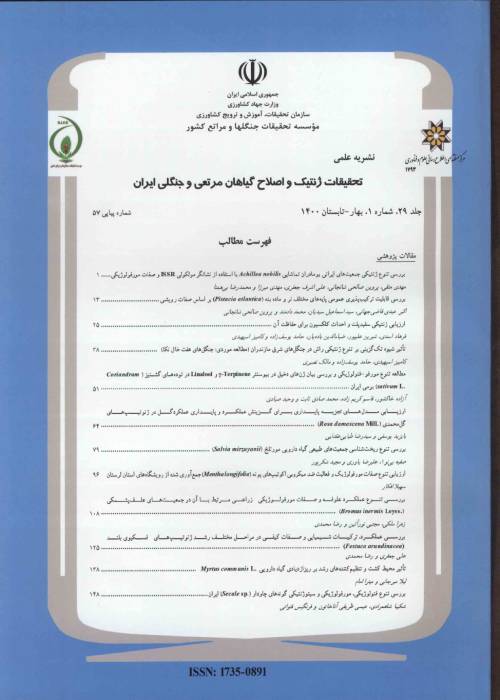Expression pattern analysis of genes involved in the biosynthetic pathway of monoterpenes and triterpenes in black cumin (Nigella sativa) plants treated with salicylic acid
Black cumin (Nigella sativa) is an important medicinal plant belonging to the Ranunculaceae which produces large diversity of secondary metabolites especially terpenes. Mono (C10) and tri-terpenes (C30) are two major structural classes of terpene compounds. Several genes are involved in biosynthetic pathway of the monoterpenes known as MEP pathway، located in plastids. In the MEP pathway، monoterpene synthases are rate- limiting enzymes for monoterpene biosynthesis. In the biosynthetic pathway of monoterpenes geranyl diphosphate synthase catalyzing geranyl diphosphate (GDP) biosynthesis as universal precursor of monoterpenes. Oxidosqualenecyclases is of the most important. In this study gene expression patterns of a monoterpene synthase، GDP synthase، beta amirin synthase and squalene oxidase were evaluated under salicylic acid treatment. Gene expression analysis of the genes at trasnscript level using semi-quantitative PCR in response to salicylic acid treatment revealed their differential expression.
- حق عضویت دریافتی صرف حمایت از نشریات عضو و نگهداری، تکمیل و توسعه مگیران میشود.
- پرداخت حق اشتراک و دانلود مقالات اجازه بازنشر آن در سایر رسانههای چاپی و دیجیتال را به کاربر نمیدهد.


